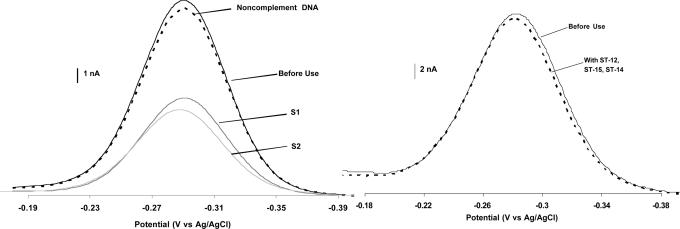Fig. 2.
The E-DNA sensor is sensitive, reusable, and highly sequence-specific. (Left) Shown are baseline-subtracted AC voltammograms for the E-DNA sensor before hybridization, after incubation with 2 μM of a low-identity target DNA, and after challenge with 400 nM of two synthetic DNAs (S1 and S2) equivalent to the Salmonella-specific gyrB PCR amplicons we are investigating here. (Right) The sequence specificity of E-DNA is sufficient for species-specific detection. Shown are baseline-subtracted AC voltammograms for the E-DNA sensor before and after incubation with 200 nM (each) of target DNA comprised of sequences from the gyrB genes of S. flexneri, S. sonnei, and E. coli. Hybridization time was fixed at 30 min for all experiments.

